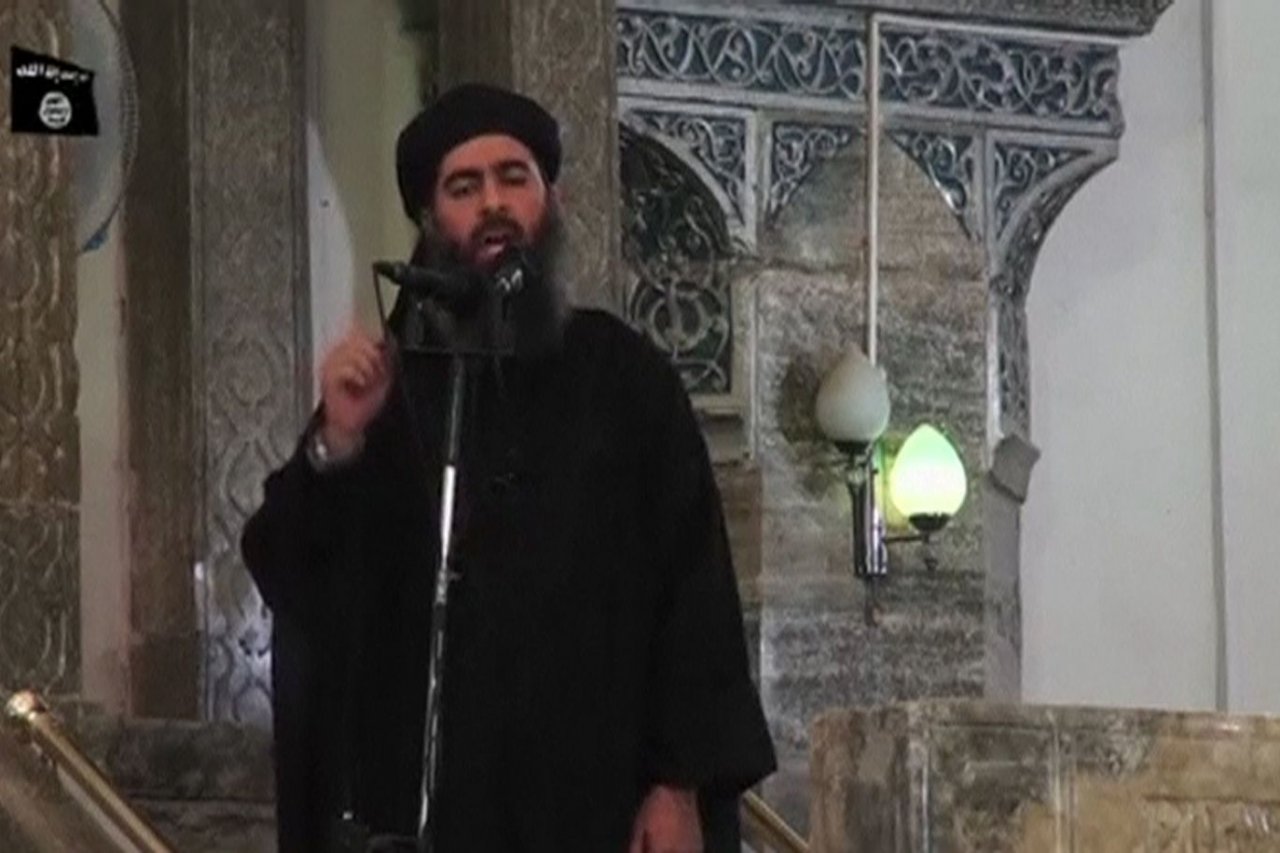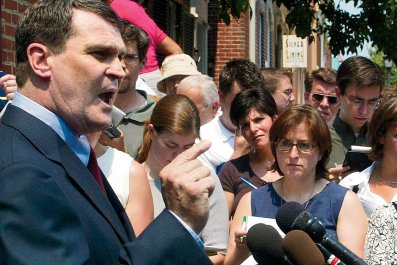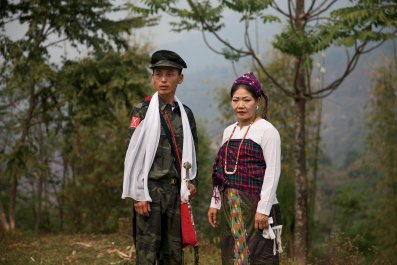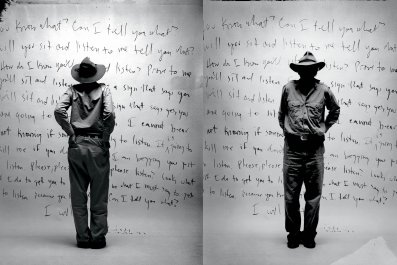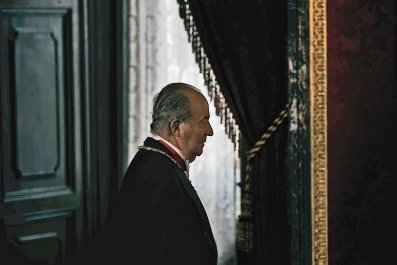To understand the chaos and bloodshed in Iraq, the masked men of ISIS and their call for an Islamic caliphate, go back 1,239 years. The year is 775. The place is Baghdad.
The Sunni caliph Al Mansur ?the Victorious?, founder of Baghdad, City of Peace and capital of the great Islamic empire that stretches from Central Asia to the Atlantic coast, has just died on his haj pilgrimage to Mecca. His son and heir Mahdi, and Mahdi?s wife Rita, have been given the keys to a secret underground crypt, with orders to leave the room alone until the caliph?s death is confirmed. They rush down to the storeroom, hearts aflutter, expecting to find piles of golden dinars, silver dirhams, precious stones and untold treasures. Baghdad is the Athens of the East, the world?s richest and most glorious city.
But behind the unlocked door something very different awaits them. The vast chamber is filled with corpses. There are men, women and children of all ages. Every body has a leather tag in the ear detailing the victim?s name and genealogy. Apart from their execution at the hands of Mansur?s henchmen, they have one thing in common. All are Shia descendants of Ali and his wife Fatima, daughter of the Prophet Mohammed.
Mansur?s Shia death chamber, less than a decade after the completion of his imperial capital, was one of the first and most chilling indications of the sectarian divide between Sunni and Shia that has bedevilled Iraq over the following 13 centuries, and is now convulsing the country today and playing havoc across the wider Middle East.
The turmoil raging in Iraq and Syria is turning old certainties on their head, threatening to redraw national and international borders and, extraordinarily, may even bring together two sworn enemies, the US and Iran, in an attempt to dismantle the terrorist group Islamic State of Iraq and Syria (ISIS) and bring some measure of stability to Iraq.
In what many Americans will regard with revulsion and many Iraqi Sunni will consider a bitter and treacherous blow, the fate of Baghdad now lies to a great extent in Iranian hands. Major-General Qassem Suleimani, leader of the elite Iranian Quds Force, has been in the Iraqi capital shoring up defences, supplying heavy weaponry and planning the fight-back against ISIS.
Like many jihadist groups, ISIS dreams big. For its leader, Abu Bakr al-Baghdadi, veteran of Al Qaeda?s senior command in Iraq after the 2003 Iraq war, the Shia Crescent that arcs across the Middle East from Lebanon and Syria through to Iraq, Iran and Bahrain is pure anathema and heresy.
Baghdadi wants to carve out a Sunni Islamic caliphate beginning with Iraq and Syria. In principle, according to this line of jihadist thinking, there is nothing to stop such a caliphate stretching from the shores of the Mediterranean to the Gulf, the Muslim world over time united as a single entity under the strict tenets of sharia law.
Never mind that the original Abbasid caliphate headquartered in Baghdad from 762-1258 represented the Golden Age of Islam, a time when the Muslim world was progressive, intellectually inquisitive and culturally cosmopolitan. Baghdad was a thriving metropolis of Jews, Christians and Muslims. An ISIS caliphate, however far-fetched, would be more reminiscent of Taliban-held Afghanistan or Al Shabaab in Somalia, exemplars of 21st-century jihadism. Summary executions, adulterers stoned to death, thieves having limbs amputated, children brainwashed into jihad, economic collapse, the list is wearily familiar.
Casting doubt on ISIS?s ambitions and its ability to achieve them is one thing. But if the redrawing of borders within the Middle East sounds entirely fanciful, remember that they are relatively new on the one hand and imposed by foreign powers on the other. In other words, they are not set in stone.
Dreamt up by the British and French in the infamous Sykes-Picot agreement of 1916, they carved up the Ottoman Middle East into British and French areas of influence and control. Iraq?s borders were drawn up by the British, lumping the three Ottoman provinces of Mosul, Baghdad and Basra ? Sunni, Shia and Kurd alike - into a single state, born in 1921. Violence has been endemic in Iraq since the country was founded. Many in the relative calm of Iraqi Kurdistan, who have longed for their own Kurdish state for years, now see the current crisis as the best time to make a unilateral declaration of independence, adding another layer of complexity to the crisis.
ISIS has understandably seized the world?s attention, partly distracted by the ongoing World Cup football tournament in Brazil. Yet far from being a completely new phenomenon, as much commentary has suggested, the masked men of ISIS, who have seized Mosul, Tikrit and a string of Iraqi towns and are now threatening the Iraqi capital, are merely the latest protagonists in the age-old contest for political power between Sunni and Shia. Some of their tools and techniques may be new ? for most of Iraq?s history there was no Twitter for insurgents to broadcast their grisly execution videos ? others, such as the beheading of victims, are completely traditional in this part of the world.
Leaf through one of the most authoritative histories of the Abbasid caliphate, which came to power in 750AD, and the section on Mansur is a whirlwind of summary executions. ??Cut off his head!? cried [Mansur], and he was taken and decapitated,? reads a typical line. ?[Mansur] gave the order and his head was cut off,? goes another. When the Tatar warlord Tamerlane, self-styled Sword Arm of Islam and Conqueror of the World, descended on Baghdad in 1401, he built 120 towers containing 90,000 skulls.
Viewed against this long, blood-drenched history, the self-aggrandising, attention-seeking foot-soldiers of ISIS seem almost half-hearted by comparison.
For many in the West, the Sunni-Shia divide borders on the unfathomable. Yet at its heart lies a simple story about the contest for political power. The Shia, who represent 10-15% of the world?s 1.6bn Muslims today, consider the Prophet?s cousin and son-in-law, Ali, the first caliph and his uncrowned descendants Mohammed?s rightful successors as leaders of the Muslim world (the term Shia comes from Shiat Ali, the followers of Ali).
For the majority Sunni community, however, the Ahl al Sunnah wal Jamaah (The People of the Traditions of the Prophet and the Consensus of the Community), Ali is the fourth caliph and last of the Rashidun, or the ?Rightly Guided Caliphs?. Authority, according to the Sunni, does not flow from his bloodline. When a Shia army led by Ali?s son Hussein was routed by a Sunni army at the Battle of Kerbala in southern Iraq in 680, the tradition of Shia martyrdom was born.
Why does any of this 7th- and 8th-century history matter? First, because Shia martyrdom lives on today, both in Shia Iran and among the 60-65% of the Iraqi population who are Shia. Second, because with only the most fleeting exceptions in the Middle Ages, political power in what is now Iraq has, from the time of Mansur, been held exclusively by Sunnis. This is the ancient structure of power that the US-led invasion of 2003 destroyed.
For the first half-millennium of the Abbasid dynasty, when Baghdad was the world?s cultural and intellectual capital, a One Thousand and One Nights city of scholars and scientists, poets and musicians, it was the Sunni caliphs who ruled supreme. After Sultan Suleiman the Magnificent took Baghdad in 1534, it was the Sunni Ottomans who held power for the next four centuries, with the briefest Persian interludes.
When the infidel British arrived in 1917, removing the Ottomans from Baghdad, they maintained this long-established tradition of Sunni power, installing a puppet monarch, King Faisal I. Even when the Iraqi monarchy was brutally swept aside in the revolution of 1958, amid scenes of medieval violence and mutilation that are being repeated by ISIS today, the Shia did not take power. For Mansur?s persecution of the Shia in the 8th century, read Saddam Hussein, the ?Butcher of Baghdad?, in the 20th.
It was only in the aftermath of the 2003 Iraq War that the Shia tasted political power under prime ministers Ayad Allawi (2004-5), Ibrahim al Jaafari (2005-6) and, since 2006, Nouri al Maliki. For Sunni and Shia alike, this was nothing less than a cataclysm. It changed the rules ? and the rulers ? of the game completely.
If the smashing together of tectonic plates between Sunni and Shia has provided the underground conditions for the current turmoil, much of the blame at ground level surely lies with Maliki, who has already served eight years as head of government and wants to serve for another four. One reason that ISIS was able to explode onto the scene was the time Maliki has been spending in smoke-filled rooms in Baghdad in frantic attempts to cobble together a coalition that will deliver him a third term as premier following parliamentary elections last April.
The fall of the key western city of Fallujah to ISIS in January should have been a loud alarm call. Instead of redoubling efforts to reach out to disaffected Sunni leaders, Maliki continued to pursue his own brand of Shia supremacism, monopolizing power and alienating Sunni and Kurd alike. This explains why Iraqi forces dissolved in the largely Sunni north as ISIS stormed into Mosul and south towards Baghdad. Maliki?s failure even to get parliament to declare a state of emergency after ISIS gains in northern Iraq speaks volumes for the contempt with which he is held in Iraq.
Critics argue that Maliki, widely seen as an Iranian stooge, has been an abject failure as prime minister. ?Practically all indicators, including security, transparency and corruption, freedom of speech, human rights, unemployment, health service, education and higher education, have gone backward,? says Samir Sumaidaie, a former minister and ambassador to Washington. ?He has relentlessly concentrated power in his hands and sought to diminish and persecute those who didn?t support him ? not only his adversaries ? and whipped up sectarian hatreds to consolidate his Islamist-Shia power base. He has alienated many, including some of his allies and, with the exception of Iran and the Syrian regime, Iraq?s neighbours.?
To be a Baghdadi today is to live once again in fear. Behind the bravado expressed in public, in private many are stockpiling rations and directing their prayers for safety to Allah. When looting broke out across the city in April 2003, the Baghdad blogger Salam Pax wrote of his horror at the self-inflicted wounds. ?To see your city destroyed before your own eyes is not a pain that can be described and put to words,? he wrote. ?It makes something snap in you and you lose whatever hope you had. Undone by your own hands.? Eleven years on, Baghdad stands on the threshold of something far worse.
If, as is likely, Baghdad is to be saved from ISIS, it will be thanks both to Iraq?s Shia neighbour Iran and to the elderly cleric Grand Ayatollah Ali al Sistani, whose rallying call earlier this month to Iraq?s Shia to fight the Sunni terrorists and defend their country has led to crowds of volunteers taking up arms. Sistani, one of the most influential figures in Iraq, a man of unparalleled religious authority in the country, was famously dismissed by Paul Bremer, head of the Coalition Provisional Authority that ran Iraq from 2003-4, as ?just another old man in a black turban?.
It was indicative of the lack of understanding of this complex country of ancient, frequently adversarial communities.
US drone strikes against ISIS may make the headlines in the days and weeks ahead as American and British special forces target the terrorists, but the drama of any such attacks will not alter the reality that the US is no longer the key player in Iraq.
However much the US dislikes it, as far as the chaos in Iraq is concerned, all roads lead to Tehran, the great winner of the 2003 war.
The caliph Mansur, not to mention Saddam Hussein, would have been appalled.
Justin Marozzi is the author of Baghdad: City of Peace, City of Blood.



